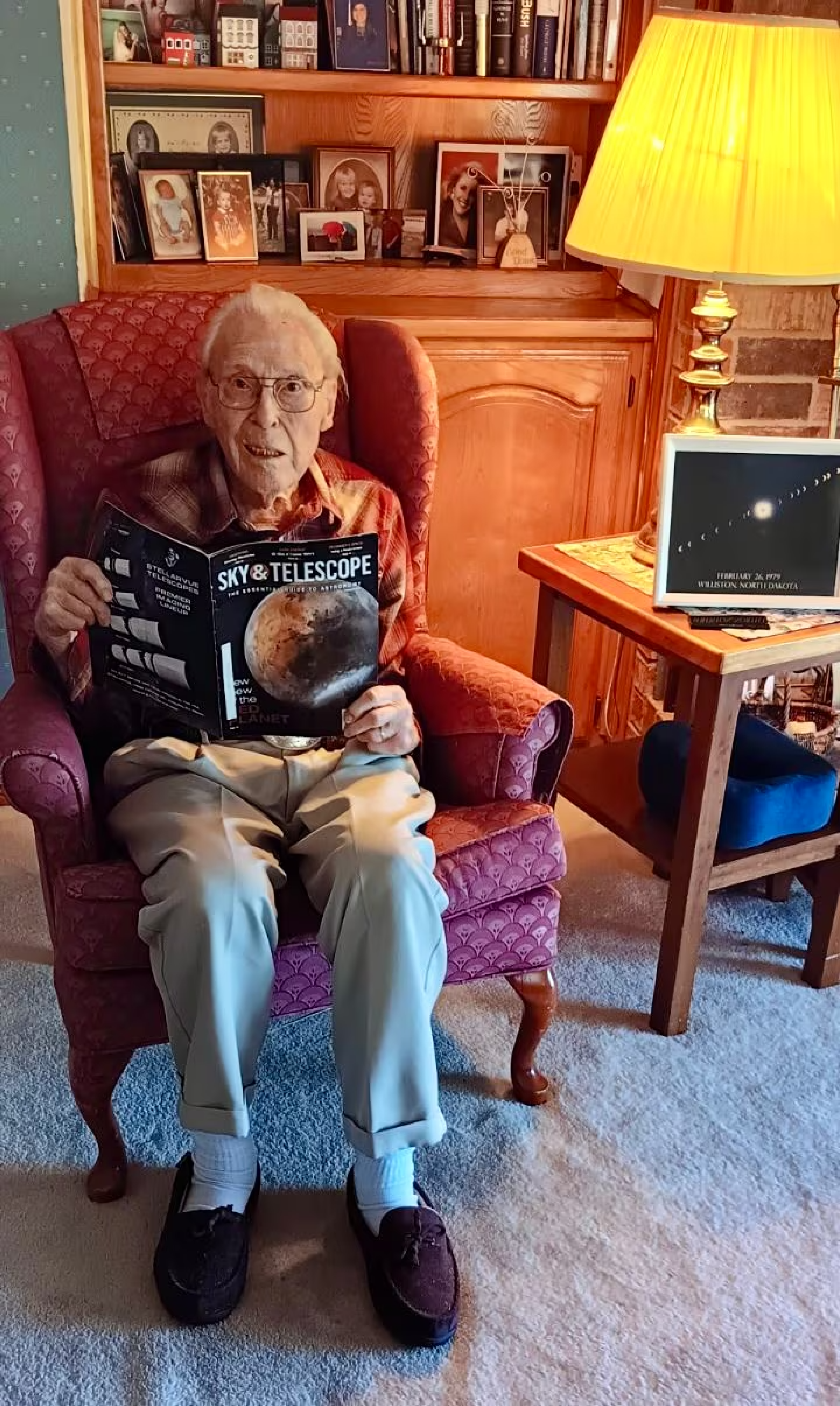Look Up & Share Your Love of the Universe
Peter Tyson Sky & Telescope

If you, like all of us at Sky & Telescope (S&T), love to chase after solar eclipses, you might have come across the story of LaVerne Biser, a 105-year-old eclipse chaser from Fort Worth, Texas, who has witnessed 12 solar eclipses in his life and is ready to watch his 13th on 8 April. (See stories from CBS News, ABC Chicago, Dallas News, The Washington Post, and the Guardian.) And we absolutely adore this picture shared by The Washington Post of Mr. Biser holding “his favorite magazine” — S&T — and smiling!
We are honored that a seasoned eclipse chaser and astronomy enthusiast like Mr. Biser is a long-time S&T subscriber. S&T has been bringing the sky and sky-gazers together since 1941, and we pride ourselves on providing vital resources trusted by star-gazers worldwide to support their love of astronomy. Like Mr. Biser, who is going to take a one-hour drive to his daughter's place in Plano, Texas, where the eclipse will have one more minute of totality than at his home in Fort Worth, most of the S&T staff will be traveling to witness this event on Monday, 8 April, and share our love affair with the universe.
We wish Mr. Biser clear, cloud-free skies for his 13th solar eclipse and encourage everyone to keep looking up and enjoy the natural beauty and wonders of the universe! Remember, if you are going to view the eclipse, make sure to look directly at the Sun only through special-purpose solar filters, such as eclipse glasses or handheld solar viewers, that comply with the transmittance requirements of the ISO 12312-2 international standard. Don't have a solar filter? You can learn how to project an image of the Sun for safe eclipse viewing. If you're in the path of totality, you can look at the Sun without a solar filter only during the few minutes of totality, when the Sun will be about as bright as the full Moon and just as safe to look at.
For more information about the 8 April total solar eclipse, read the most recent press release from the American Astronomical Society.

